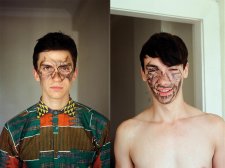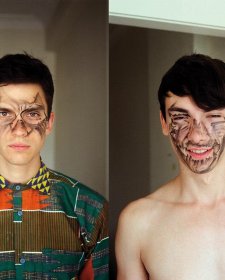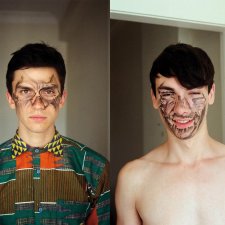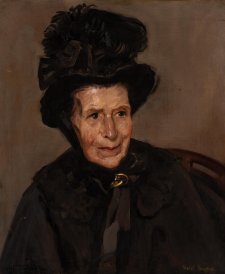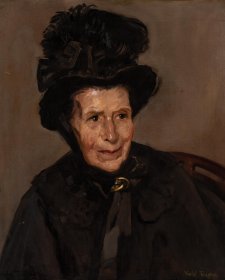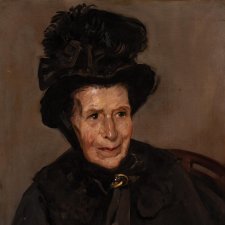I’m highly dyslexic and struggle reading and left school very young, and my way of learning was to directly interact with people. When you get to know people you learn so much from them and if I was a journalist it would be interviewing them and I’d be learning but, for me, it’s painting a portrait.
I think you have to look beyond the physical interesting aspects of a face and try and paint an essence of the person. I think a big part of the portrait is someone trusting you and, if they trust you and you do the right thing, people open up and there’s moments where someone speaks about their life and what they’re passionate about, could be their children, or their partner, or an experience they’ve had. And there’s a look in their eyes and their mouth might move in a certain way or they look across, it’s something, you know when it’s hitting them emotionally, they do this and it’s that kind of moment, that’s the image I want to paint.
So, with my portrait of Hugh Jackman, we actually share a lot of mutual friends, friends that have worked together and friends that I’m very close with. And I remember Baz Luhrmann, who’s a mate, saying, you have to meet Hugh, I know you’ll get along with him and a few other people said the same thing, but you never know. It’s like going on a blind date with someone and you meet up with them and someone got it right, you actually have a real great connection.
Photography is a big part of the portrait. I normally film people and photograph them and base the portrait on all my images and film … Hugh called me up the night before he was coming to do photographs at my house and said, if I don’t jump on a plane tonight then I’m going to get shut out of the US [due to covid-19] and his family was there. So, we had to go to plan B.
I let them settle back in the US and then I made a video for Deb, Hugh’s wife, on how to shoot the portrait … And Hugh sent this funny video where he had a dumpling basket on his head … I thought how am I going to use this? I went back and said, oh, that’s great but can you send some clear images through as well?
The painting’s quite different to the photograph because I made it black and white and added my own touch to it. But there’s a look in Hugh’s eyes and there’s a relaxed, you know, he’s touching his face and his neck but it’s not one of those [poses] in front of the camera, it’s more of a moment in a conversation and you can tell it’s a conversation with someone that he knows and trusts. It’s not a GQ photo shoot, which are probably great images as well, but I didn’t want that, I wanted that intimacy ... The side of Hugh that’s not ‘The Showman’, it’s not ‘Wolverine’, it’s something more personable.
Being asked to have a portrait in the National Portrait Gallery is bigger than winning any art prize. It’s bigger than an Archibald Prize, it’s bigger than a Doug Moran, more important than any of the money or what they could pay me to paint a portrait. It’s like my dream come true. I think as a portrait artist it doesn’t get any more important to me. There’s so many incredible works in the National Portrait Gallery, I think it would be arrogant to say mine’s going to stand out amongst all the incredible works but, hopefully, there’s some young artists like myself and they’ll know my story and they’ll know Hugh’s and it’ll make them dream and think big that they can do the same thing because technique’s not important. The finish is not important, it’s a connection with the person so, hopefully, I can translate that a little to people.
I struggled with dyslexia but now I know dyslexia is actually my greatest gift so, if I didn’t have dyslexia, I wouldn’t have the same creative mind … if you have dyslexia, if you have a disability in general or just a challenge in life, all these life experiences, I think, you can turn around and use them to make yourself a great artist.
I don’t think I’ll always paint realist paintings and I’m trying to slowly reverse backwards. Even a painting of Hugh, to most people it does look very detailed, but I could paint every little pore in his face and have it look exactly like a photograph but I think the illusion, the expression, the experimentation, all of those things make the painting more truthful and interesting and it becomes personal. You know, I want people to walk in, see the portrait of Hugh and feel a real connection.




